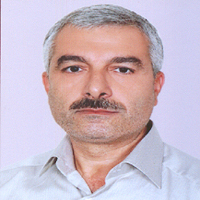دکتر زهرا امیدی
-
سرمایه گذاری در مسکن یکی از معمول ترین روش های سرمایه گذاری در ایران است. بخش مسکن و ساختمان دارای ارتباط گسترده با سایر بخش های اقتصادی است و مسکن سالانه حجم وسیعی از نقدینگی کشور را به خود جذب می کند، به همین دلیل سرمایه گذاری در این بخش از اهمیت بیشتری برخوردار بوده و می تواند در روند رشد و توسعه کشور سهم به سزایی داشته باشد. در این پژوهش با استفاده از روش گشتاورهای تعمیم یافته اثر سرمایه گذاری در بخش مسکن بر رشد اقتصادی استان های ایران طی دوره زمانی 1398-1385 مورد بررسی قرار گرفته است. نتایج نشان داد که سرمایه گذاری در مسکن تاثیر مثبت و معنی داری بر رشد اقتصادی استان های ایران دارد. همچنین سایر نتایج مطالعه حاکی از آن است که وقفه متغیر رشد اقتصادی تاثیر مثبت و معنی دار بر رشد اقتصادی استان های ایران دارد. متغیرهای سرمایه انسانی، سرمایه فیزیکی و شاخص صنعتی شدن تاثیر مثبت و معنی دار و متغیرهای اندازه دولت و شهرنشینی اثر منفی و معنی دار بر رشد اقتصادی استان های ایران دارند.
کلید واژگان: رشد اقتصادی, سرمایه گذاری در مسکن, استان های ایران, گشتاورهای تعمیم یافتهINTRODUCTIONEconomic growth is one of the goals that every economy pursues, and the reason for this is the achievement of many benefits and advantages that are realized in the process of growth. Policy makers in every country seek to achieve a higher growth rate in their country.
Among the types of assets, housing is considered one of the most important socio-economic components in a country. It is also argued that in the new theories, the development of the housing sector is one of the drivers of economic growth, so in this article, the impact of investment in housing on the economic growth of Iran's provinces during the years 2006-2019 has been examined.THEORETICAL FRAMEWORKAccording to the point of view of macroeconomics, considering that between 21 and 24% of the country's GDP is related to the housing sector (during the construction and operation period), the housing sector is considered as the driving engine of economic growth and the factor that strengthens it in the country. From the point of view of consumption and investment, housing also plays a significant role in national accounts.
In general, there are three different views on the relationship between investment in real estate and economic growth. The first point of view emphasizes that investment in real estate affects economic growth. The second point of view shows that economic growth affects investment in real estate. According to the third perspective, there is a mutual causal relationship between investment in real estate and economic growth.METHODOLOGYTo estimate the research model, the econometric method of generalized moments of GMM has been used. The important feature of this estimation method is that there is no need to know the exact distribution of disturbance sentences. The main assumption of this method is based on the fact that disturbance terms are not correlated with instrumental variables. The method of generalized moments, by choosing the correct instrumental variable, by applying a weight matrix, can create a compatibility estimator for the conditions of heterogeneity and unknown autocorrelations.
RESULTS & DISCUSSIONThe results show that the economic growth coefficient of the previous period was evaluated as 0.73. Based on the probability level corresponding to the t-statistic of this coefficient, it can be stated that the economic growth of the previous period had a positive and significant effect on the economic growth in the provinces of Iran. This result is consistent with economic theories and most previous studies such as Kazerooni et al (2018) and Mozaffari (2021). The variable coefficient of human capital has been evaluated as 0.16 and according to the probability level corresponding to its t-statistic, it can be stated that human capital has had a positive and significant effect on the economic growth of Iran's provinces. This result is in line with endogenous growth theories and previous empirical studies such as Kazerooni et al (2018) and Mozaffari (2021).
The size of the government also has a negative and significant effect on economic growth. So that the elasticity of the economic growth of Iran's provinces in relation to the government's current expenses is equal to -0.32.
The urbanization variable has a negative and significant effect on the economic growth of Iran's provinces. The negative sign of the variable coefficient of urbanization can be caused by the fact that the rate of urbanization has increased regardless of the process of providing the necessary infrastructure in the cities and increasing the expertise of the migrant workforce.CONCLUSIONS & SUGGESTIONSInvestment in housing has a positive and significant effect on the economic growth of Iran's provinces during the research period. Which is compatible with the growth models and is in line with the studies conducted in the field of the effect of investment in real estate on economic growth, it is recommended that the government, in addition to paying special attention to capital expenditures in the field of housing; It has provided the necessary incentives and conditions for the investment of the private sector in the field of housing, so that the investment in this sector has increased, which on the one hand has increased the welfare and economic growth of the society, and on the other hand, it can reduce the lack of housing supply in this way, the Iranian market can be partially compensated. The effect of capital stock on the economic growth of Iran's provinces also has been positive and significant, which is in line with the existing theory in this field and previous studies, it is recommended that the government provide a mechanism and in the budgeting of the provinces. The discussion of the number of credits for the acquisition of capital assets should be given special attention in order to improve the economic growth of different regions of the country. Human capital and industrialization index have a positive and significant effect on the economic growth of Iran's provinces. Aggregation of industrial activities leads to growth by creating savings resulting from local aggregation. The effect of urbanization on the economic growth of Iran's provinces was negative and significant. Although the previous theory and studies show a positive and significant effect of urbanization rate on economic growth. Governments should pay attention to prevent the increase in the size of the government, because based on the results of this research, the economic growth has decreased with the increase in the size of the government, and the large involvement of the government in the economy can have negative consequences. This result is consistent with the results of most previous studies in developing countries.
Keywords: Economic Growth, Housing investment, Iranian Provinces, GMM -
مجله بین المللی انجمن آهن و فولاد ایران، سال هجدهم شماره 1 (پیاپی 34، Winter and Spring 2021)، صص 98 -105با توجه به پتانسیل کشور در تولید و صادرات فولاد، توجه به صادرات آن در کاهش وابستگی به درآمدهای نفتی مفید است. از این رو، هدف این مقاله بررسی رابطه نرخ ارز و قیمت نفت بر صادرات فولاد ایران به چین در بازه زمانی1387:11 تا 1398:12 با استفاده از رویکرد موجک و گارچ چند متغیره است. نتایج مدل موجک نشان داد، افزایش تحریم ها در ابتدای دهه 1390 و تشدید آنها طی سال های 1397 و 1398، موجب تشدید تاثیر نرخ ارز بر صادرات فولاد ایران به چین شده است. همچنین، طی دوره زمانی 1392 تا 1394 با طولانی شدن روند مذاکرات و تغییرات قیمت جهانی نفت همبستگی بین قیمت جهانی نفت و صادرات فولاد ایران به چین در بلندمدت تشدید شده است. نتایج گارچ چند متغیره نشان می-دهد که همبستگی بین نرخ ارز حقیقی و صادرات فولاد ایران به چین در بیشتر دوران منفی بوده است و همچنین همبستگی بین نرخ ارز حقیقی و قیمت نفت در بیشتر دوره مورد بررسی مثبت بوده است. بنابراینمی توان گفت فولاد از جمله کالاهای صادراتی ایران است که با افزایش قیمت نفت و افزایش درآمدهای نفتی موجب افزایش درآمدهای صادرات غیر نفتی ایران می شود.کلید واژگان: صادرات, فولاد, ایران, موجک, گارچ چند متغیرهInternational Journal of iron and steel society of Iran, Volume:18 Issue: 1, Winter and Spring 2021, PP 98 -105Considering Iran's potential in steel production and exports, attention to its exports contributes to reducing the country’s dependence on oil revenues. Hence, the purpose of this study is to investigate the effect of exchange rate and oil prices on Iran’s steel exports to China in the period between February 2008 and March 2019 using the wavelet and multivariate-GARCH approaches. The results of the wavelet model showed that increasing in sanctions in the early 2010s and their intensification during 2018 and 2019 has intensified the impact of exchange rate on Iran's steel exports to China. Also, during the period 2013 to 2015, with the prolongation of the negotiation process and changes in world oil prices, the correlation between world oil prices and Iran's steel exports to China has intensified in the long run. The results of multivariate GARCH show that the correlation between the real exchange rate and Iran's steel exports to China has been negative for most of the period. Moreover, the correlation between the real exchange rate and oil prices has been positive for most of the period under study. Therefore, it can be said that steel is one of Iran's export commodities which increases its non-oil export revenues as oil prices and revenues increase.Keywords: Exports, Steel, Iran, Wavelet, Multivariate-GARCH
- این فهرست شامل مطالبی از ایشان است که در سایت مگیران نمایه شده و توسط نویسنده تایید شدهاست.
- مگیران تنها مقالات مجلات ایرانی عضو خود را نمایه میکند. بدیهی است مقالات منتشر شده نگارنده/پژوهشگر در مجلات خارجی، همایشها و مجلاتی که با مگیران همکاری ندارند در این فهرست نیامدهاست.
- اسامی نویسندگان همکار در صورت عضویت در مگیران و تایید مقالات نمایش داده می شود.






